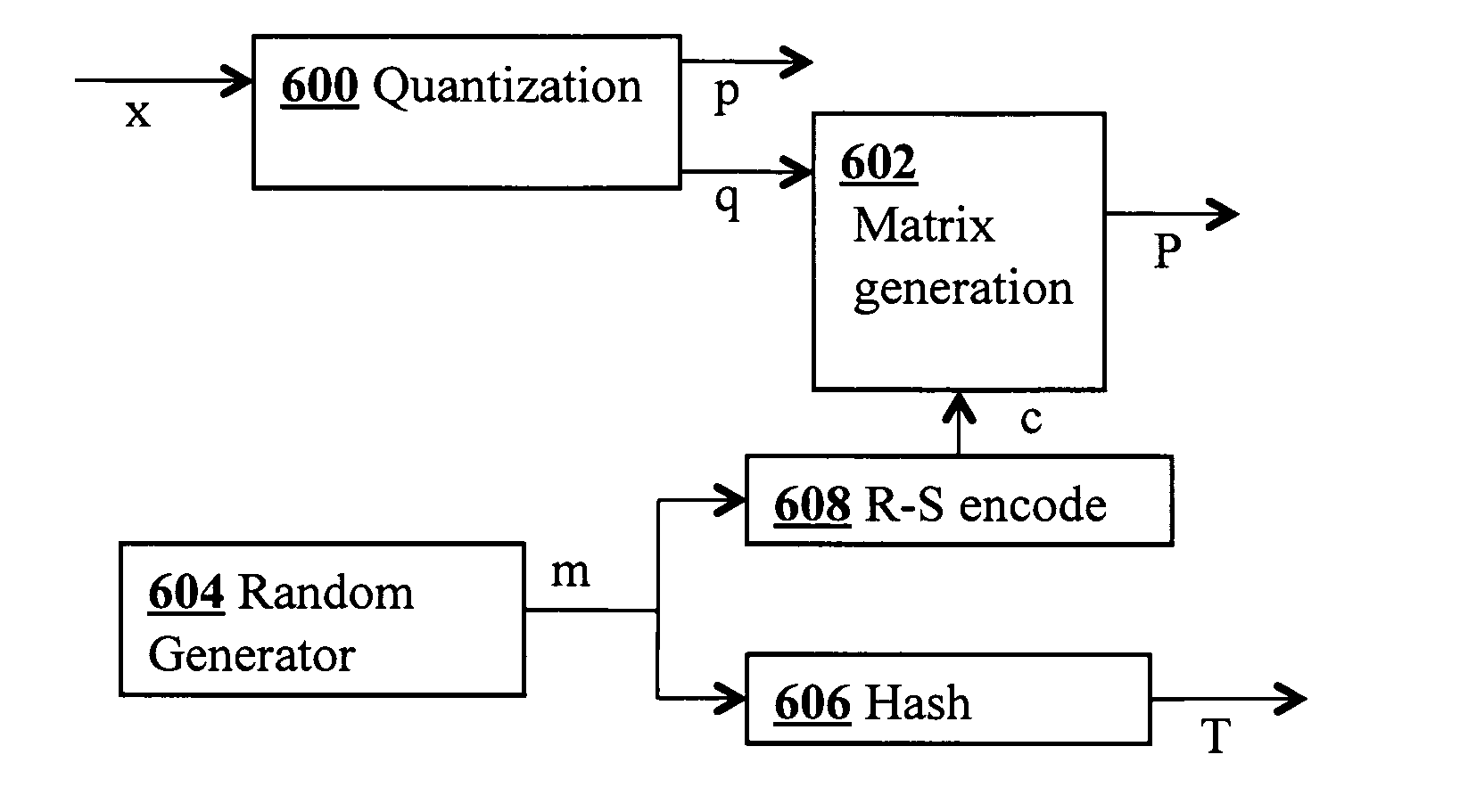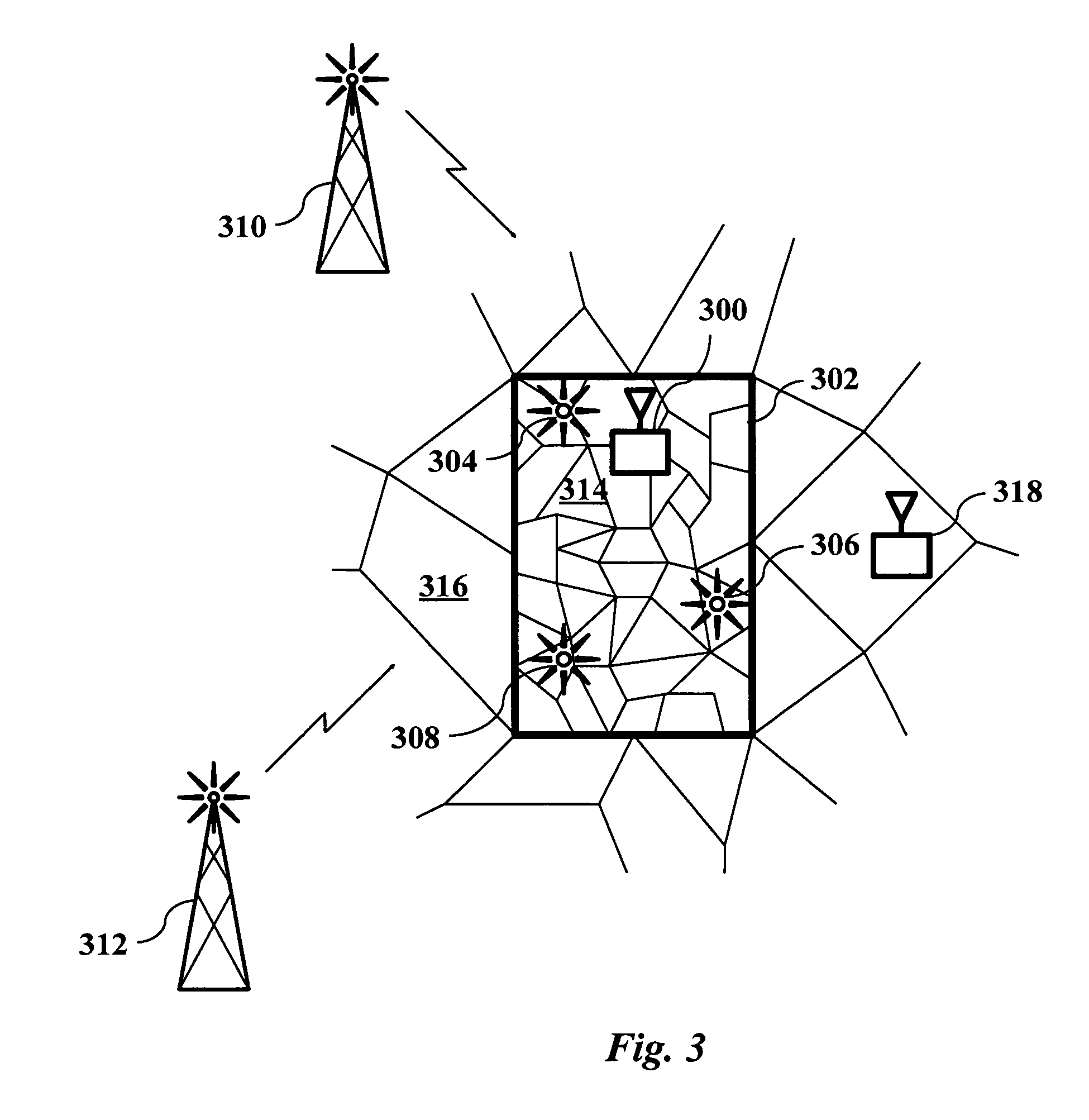Geosecurity methods and devices using geotags derived from noisy location data from multiple sources
a geotag and location data technology, applied in the field of geotag methods and systems, can solve the problems of limited stability or location accuracy, transmitters may be temporarily out of service, signals may experience unpredictable fluctuations, etc., and achieve the effect of increasing security, reducing false accept rate and geographic security radius
- Summary
- Abstract
- Description
- Claims
- Application Information
AI Technical Summary
Benefits of technology
Problems solved by technology
Method used
Image
Examples
Embodiment Construction
[0017]FIG. 1 is a block diagram illustrating components of a geosecurity device according to an embodiment of the present invention. RF signals from multiple sources are detected by an antenna 100 connected to a receiver 102 which is capable of receiving multiple distinct types of RF signals. Parameter extractor 104 connected to receiver 102 analyzes the received signals and extracts location-dependent signal parameters which are then passed to geotag generator 106. Using the extracted location-dependent parameters, geotag generator 106 computes an encrypted geotag which is then compared at geotag matcher 108 with one or more stored geotags in geotag database 110. Depending on the results of the match, a geosecured function 112 of the device may then be executed. The device is preferably tamper-resistant.
[0018]Although the term geotag is commonly used to describe any type of geographical metadata such as latitude and longitude associated with a piece of data such as a photograph, in...
PUM
 Login to View More
Login to View More Abstract
Description
Claims
Application Information
 Login to View More
Login to View More - R&D
- Intellectual Property
- Life Sciences
- Materials
- Tech Scout
- Unparalleled Data Quality
- Higher Quality Content
- 60% Fewer Hallucinations
Browse by: Latest US Patents, China's latest patents, Technical Efficacy Thesaurus, Application Domain, Technology Topic, Popular Technical Reports.
© 2025 PatSnap. All rights reserved.Legal|Privacy policy|Modern Slavery Act Transparency Statement|Sitemap|About US| Contact US: help@patsnap.com



